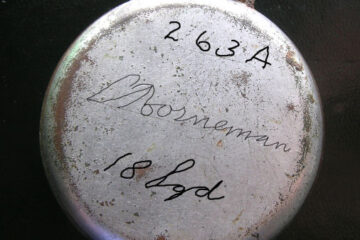Conrad Emil Lambert Helfrich (1886–1962) was a senior officer in the Royal Netherlands Navy and one of the Netherlands’ most prominent military leaders during the Second World War. Born in Semarang, Java, he spent much of his career in the Netherlands East Indies (NEI), becoming known for his strong leadership and strategic acumen. In early 1942, as the Japanese invasion overwhelmed the NEI, Helfrich was appointed Commander-in-Chief of all Dutch armed forces in the Far East. While most of the Dutch forces in exile regrouped in Australia, Helfrich was sent to Ceylon (modern-day Sri Lanka), placing him at the centre of a growing dilemma that would shape Dutch coordination and Allied relations for the remainder of the war.
He had to report to the British South East Asia Command. While the Dutch forces in Australia had to report to the Americans. Although respected for his wartime service, Helfrich struggled with the geographic and political constraints of a fragmented Dutch command. After the war, he remained active in Dutch naval affairs until his retirement.
A commander isolated from his forces
Helfrich, already a respected naval strategist and veteran of earlier NEI operations, assumed supreme command just as the Allied ABDACOM command structure was disintegrating. As Java fell, some Dutch warships and supply vessels managed to escape westward across the Indian Ocean and grouped in Ceylon. But the larger portion of surviving Dutch and NEI forces—army units, airmen, merchant shipping, and exiled administrators—had evacuated to Australia.
Helfrich quickly recognised the problem: to effectively coordinate Dutch military contributions and liaise with Allied forces, he needed to be based where the bulk of the forces were located—Australia. He requested permission from the Dutch government-in-exile in London to relocate his headquarters. However, this request was refused.
Strategic ambiguity: London’s two-camp policy
The Dutch government in London, led by Prime Minister Pieter Sjoerds Gerbrandy, had its own political rationale. Keen to maintain diplomatic flexibility, the Dutch wanted to keep one foot in each of the two major Allied camps—British and American. Ceylon, under British military control, offered proximity to London and integration with the British South East Asia Command (SEAC), led by General Sir Archibald Wavell. Australia, in contrast, was rapidly aligning itself under the American-led South West Pacific Area (SWPA), commanded by General Douglas MacArthur.
For a small exiled power like the Netherlands, this hedging strategy made sense diplomatically—but it came at an operational cost. With Dutch forces now split between two theatres, Helfrich was left geographically and politically isolated from the majority of his own troops, who were now embedded in Australia under SWPA.
Operational and political consequences
This dual command structure complicated the Dutch war effort. Communications between Helfrich in Ceylon and the Dutch army and air force commanders in Australia were often slow, indirect, and burdened by conflicting Allied priorities. While Helfrich reported to Wavell in SEAC, Dutch army and naval units in Australia answered operationally to MacArthur’s SWPA. Even Dutch shipping assets were now divided: some operated out of Indian Ocean ports, others from Sydney, Brisbane, or Fremantle.
The situation also made Dutch political decision-making more cumbersome. The government in London remained committed to a restored NEI, but struggled to coordinate its military and diplomatic machinery stretched between Britain, Ceylon, and Australia. Dutch requests to unify command or consolidate forces were often denied or ignored, further frustrating figures like Helfrich, who saw both strategic clarity and operational effectiveness slipping away.
Legacy and reflection
Lieutenant Admiral Helfrich continued to lead from Ceylon for the duration of the war, playing a central role in Dutch naval strategy and liaison with British counterparts. But his position highlighted the broader limitations of Dutch power in exile: overstretched, diplomatically divided, and dependent on Allied goodwill. The fragmentation of Dutch forces and command structures reflected the real constraints facing smaller Allied nations operating under the shadow of global powers.
Helfrich’s experience offers a valuable case study in wartime alliance politics, and a reminder of how geography, diplomacy, and limited resources shaped Dutch–Australian cooperation from the very beginning.
Related articles
- A Dutch military and civil inventory in Australia – March 1942 snapshot
Provides a comprehensive overview of the Dutch forces and administrators who regrouped in Australia, separate from Helfrich’s command in Ceylon. - From indifference to diplomacy: how the war transformed Dutch–Australian foreign relations
Explores the shift in Dutch–Australian relations during the war and includes insights into how split command structures complicated Allied cooperation. - The Dutch purchasing mission and wartime supply issues in Australia
Details the establishment of Dutch military procurement and logistics in Australia, contrasting with British-based planning in Ceylon. - Convoy ZK8: Dutch ships deliver Australia’s troops to the front
Demonstrates the role Dutch naval assets in Australia played directly under SWPA, outside Helfrich’s direct command.


